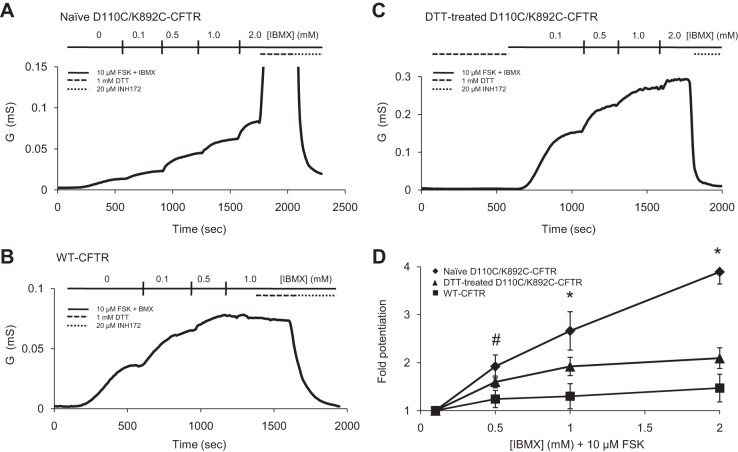Fig. 8.
An intact inhibitory disulfide bond between ECL1 and ECL4 reduces sensitivity of D110C/K892C-CFTR to phosphorylation stimulus. CFTR currents in whole oocytes were activated by 10 μM forskolin (FSK) and increasing concentrations of IBMX, and 1 mM DTT and 20 μM Inh172 (the CFTR-specific inhibitor) were added at the indicated times. Conductance is calculated as described in Fig. 1 and 3 legends. A: conductance from naïve D110C/K892C-CFTR channels potentiated by increasing concentrations of IBMX and further potentiated by subsequent application of 1 mM DTT. B: conductance from WT-CFTR channels showing saturation at >0.5 mM IBMX and lack of potentiation at 1 mM DTT. C: conductance from DTT-treated D110C/K892C-CFTR channels with increasing concentrations of IBMX. D: potentiation of each variant normalized to 0.1 mM IBMX + 10 μM forskolin (n ≥ 3 for each variant). *P < 0.05, naïve D110C/K892C-CFTR vs. DTT-treated D110C/K892C-CFTR and WT-CFTR. #P < 0.05, naïve D110C/K892C-CFTR vs. WT-CFTR, and P = 0.087, naïve D110C/K892C-CFTR vs. DTT-treated D110C/K892-CFTR.

